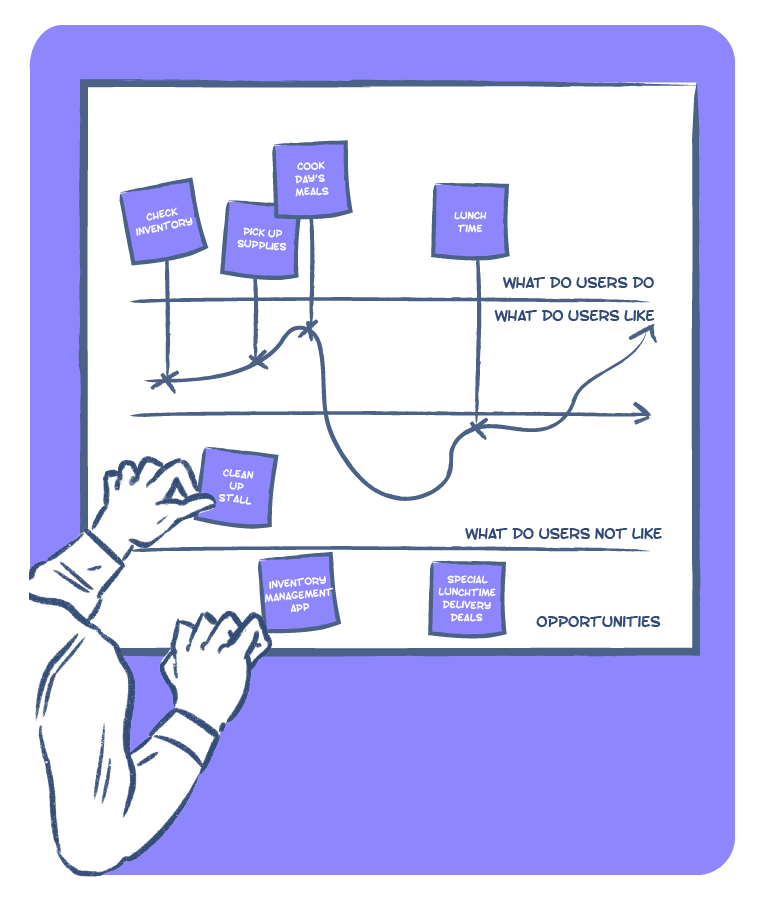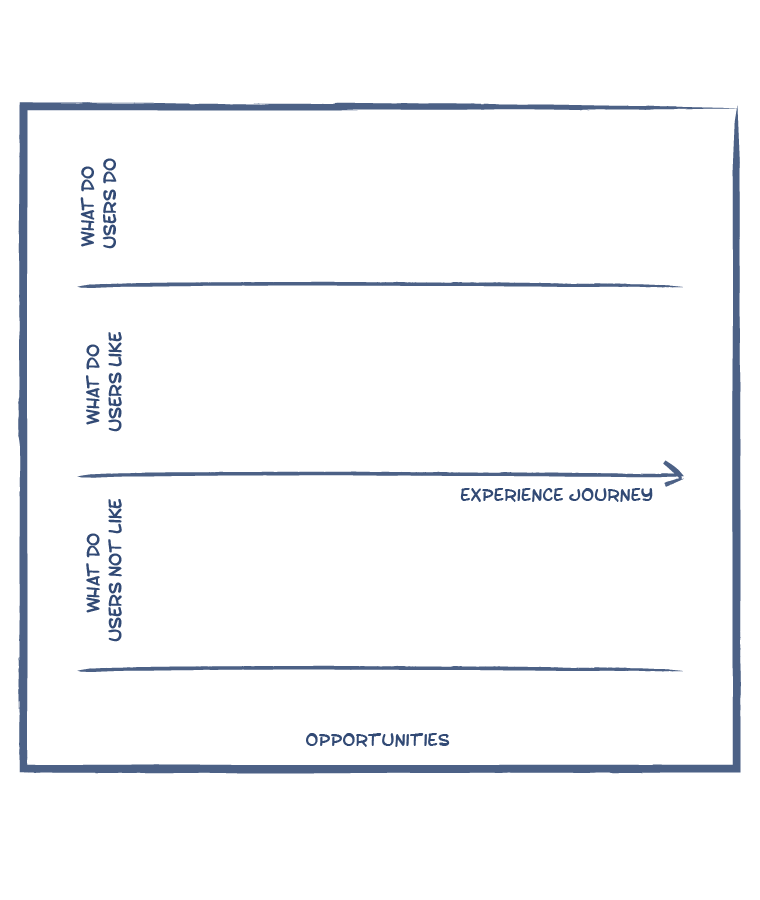HUMAN CENTERED DESIGN | DEFINE
Journey Map
30+ Min
Journey Map is a tool used at various points (research, design, and prototyping) of the design process. It is used to document different stages, touch-points, interactions and emotions a respondent goes through as part of an end-to-end experience. Journeys may differ for different kinds of users, and for different use cases of a product or service.
USE CASES
- Map products, services and systems as end-to-end user experience journeys.
- Document current experiences for users.
- Reveal opportunities for improving experience at each step.
- Reimagine future experiences for users.
LIMITATIONS
The use of the Journey Map tool is dependent on the designer's ability to accurately map all steps of an end-to-end experience, and focus on the details.

